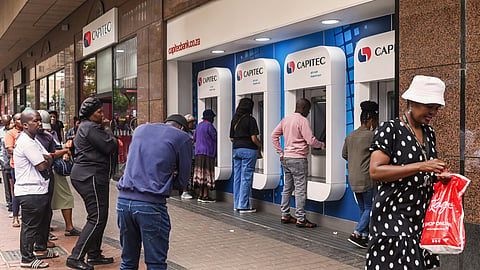Capitec aims for expansion beyond retail, eyes business and insurance growth
Capitec Bank Holdings Ltd., South Africa's top-performing share post-democracy, is shifting focus to broaden its business by leveraging its successful retail banking approach. CEO Gerrie Fourie envisions targeting small businesses in the informal sector, aiming to bolster the bank's presence in business banking and insurance, following a surge in stock value and record-breaking profits.
Sign up for your early morning brew of the BizNews Insider to keep you up to speed with the content that matters. The newsletter will land in your inbox at 5:30am weekdays. Register here.
By Adelaide Changole
Capitec Bank Holdings Ltd., South Africa's best-performing share since the advent of democracy, wants to use its retail banking strategy to grow its business banking and insurance units.
The Stellenbosch, South Africa-based lender, which built the country's biggest bank by customer numbers by focusing on low-income depositors and unsecured lending in one of the world's most unequal nations, will seek to woo small businesses in the informal sector to expand further, Chief Executive Officer Gerrie Fourie said.
"If I look at South Africa, we're not going to get unemployment down and get the economy growing via the government and private sector," he said at a briefing on Tuesday. "It's the entrepreneurs that we need to support."
The stock jumped as much as 9%, the most in seven months, after reporting record profit that beat analysts' estimates. Capitec's shares have surged 1,277-fold since the company listed on Feb. 18, 2002, outpacing a six-fold advance in the benchmark FTSE/JSE Africa All Share Index.
"I'm excited in what is lying ahead in the business banking space," Fourie said. Capitec is still building the unit and "we are busy just making certain we can handle the capacity," he said.
Capitec was founded by Michiel le Roux in 1997, three years after Nelson Mandela led the African National Congress to victory in the nation's first election after the end of apartheid. The lender was spun off from financial services company PSG Group Ltd. in March 2001, and listed on the Johannesburg Stock Exchange in February 2002.
Over the past two decades, Capitec has lured 22 million customers and become the third-largest lender by market value, even though with 208 billion rand ($10.8 billion) of assets it ranks as the smallest of the major lenders. Standard Bank Group Ltd. has 3 trillion rand of assets.
"There's still enough growth potential over the next 10 years," Harry Botha, an analyst with Anchor Capital Pty Ltd., said before the earnings announcement. "The bank still has meaningful growth potential through cross-sell and up-sell of its existing product."
Still, the highest borrowing costs in 14 years hurt Capitec's low-income customers and increased the bank's bad debt to 10% in the year through February, compared with about 1% for its bigger rivals. The bank has also pared back unsecured lending, as impairments surged 37%.
As a result, lending to individuals climbed just 2%, while credit to corporates jumped 23%. It's also building its insurance segment and expanding payment services. The diversification boosted non-lending income by 26% to 19.58 billion rand.
The bank proposed a dividend payout of 48.75 rand per share for the period, beating consensus estimate of 45.17 rand.
Read also:
© 2024 Bloomberg L.P.

